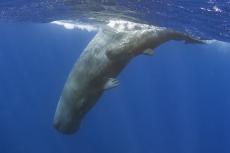Ancient Deep-Sea Coral Reefs Serve as Underwater ‘Islands’ in the Gulf Stream
NOAA has found that some largely unexplored deep-sea coral reefs off the coast of North Carolina are not only larger than expected but also home to commercially valuable fish populations and many newly discovered and unusual species. These deep coral habitats on the continental slope off the east coast of the US are perhaps hundreds of thousands of years old.
“We discovered that a number of animals thought to be rare are common around the corals, documented many animals outside of their previously known ranges, and discovered species new to science,” NOAA zoologist Martha Nizinski said.
“We also have had a firsthand look at how animals are using the habitat and interacting with each other. These discoveries relate to the fact that this has been a difficult habitat for scientists to sample because of the deep depths, rough topography and strong currents from the overlying Gulf Stream.”
Nizinski says the coral habitats explored during the expeditions appear to be more extensive than previously believed and are important habitats for several species of commercially and recreationally important fish as well as sponges, crabs, brittle stars and other creatures. The corals also contain historical data about changing ocean climate and productivity and are hotspots of biodiversity.
“These deep-water coral banks can grow to be 100 meters tall and kilometers long. It is not what people expect to find off North Carolina, probably the northernmost deep-water coral banks existing along the US East Coast.”
Many organisms live in and around these deep coral habitats, including species new to science and species with pharmaceutical potential. She is still studying the biological and coral samples collected during the various expeditions, research that will take several more years to complete.













































